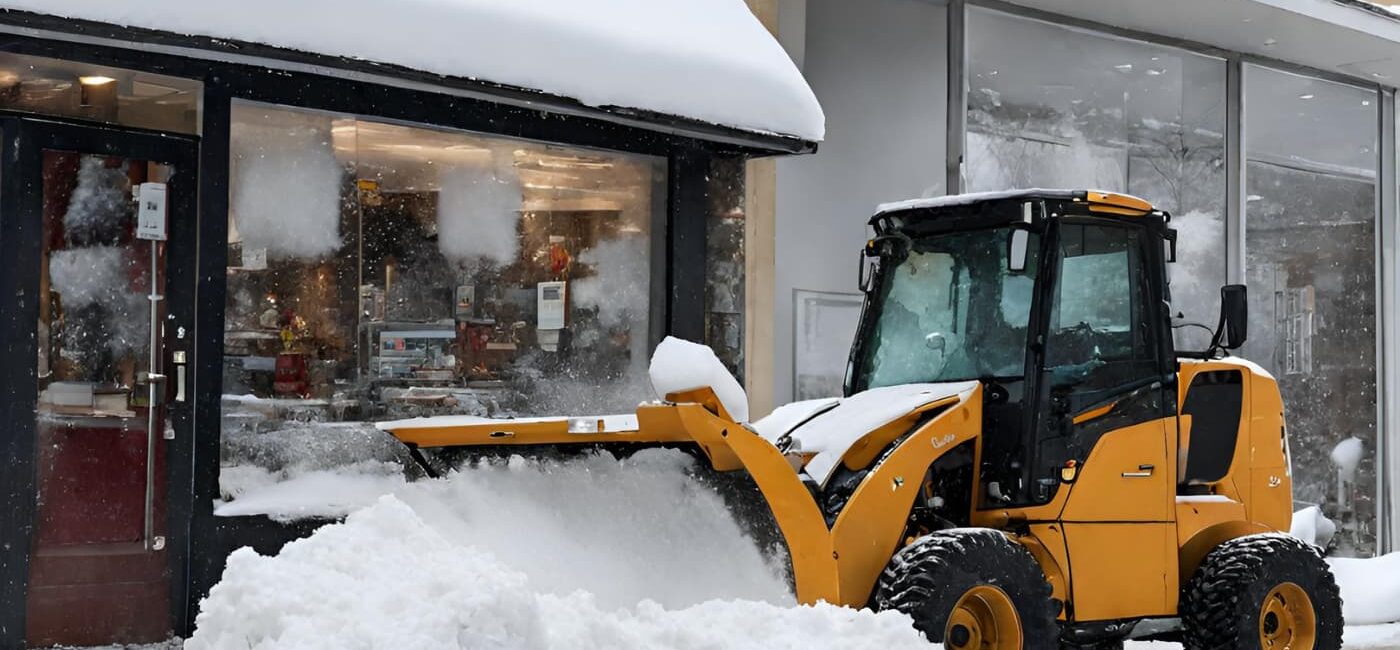This guide delves into the realm of efficient snow disposal for businesses. Effective snow removal practices aren’t just about convenience; they are crucial for ensuring safety, accessibility, and the seamless operation of your enterprise. In this article, we’ll explore practical tips and strategies for dealing with snow piles, including the use of rock salt ice melt, and potentially consider the benefits of hiring commercial snow removal services.
The Challenge of Snow Piles
Snow accumulation can quickly transform a picturesque winter landscape into a logistical nightmare for businesses. Snow piles can obstruct parking lots, walkways, and access points, affecting not only the convenience of customers and employees but also the day-to-day operations of your business. It is crucial to understand the challenges posed by snow piles and the importance of efficient snow disposal solutions.
Snow Removal Best Practices
Before delving into efficient snow disposal tips, it’s essential to lay the foundation with snow removal best practices. Hiring professional snow removal services is often the first step in ensuring that snow is managed promptly and effectively. These experts bring specialized equipment and expertise to the task, which is especially vital for businesses with large areas to clear. Consistency and timeliness in snow removal are key to preventing snow piles from becoming unmanageable.
Efficient Snow Disposal Tips
Efficient snow disposal requires a combination of planning, strategy, and the right equipment. To tackle snow piles effectively, consider the following tips:
- Plan Ahead: Develop a snow removal plan that outlines priorities, responsibilities, and timelines. Ensure that your plan is adaptable to changing weather conditions.
- Strategic Piling: When clearing snow, pile it strategically in areas that won’t impede access or drainage. Avoid creating obstacles or blocking fire exits.
- Snow Melting: Explore snow melting techniques and equipment, such as snowmelters or heated mats, to expedite snow disposal. These methods can be particularly useful for high-traffic areas.
- Snow Relocation: If space allows, consider relocating snow to less frequented areas of your property. Be mindful of any regulations or environmental concerns when doing so.
- Regular Maintenance: Implement a schedule for ongoing snow removal and maintenance. This prevents snow piles from accumulating to unmanageable heights.
- Employee Training: Train your staff on proper snow disposal techniques to ensure safety and efficiency. Provide them with the necessary equipment and resources.
Environmental Considerations
Efficient snow disposal should also take environmental considerations into account. Snow removal practices can have an impact on the environment, so it’s essential to adopt responsible approaches. Be aware of any local regulations related to snow disposal, and consider these eco-friendly practices:
- Use Eco-Friendly De-icing Agents: Opt for environmentally friendly deicer salt that minimizes harm to plants and wildlife.
- Avoid Water Contamination: Prevent the runoff from snowmelt, which may contain pollutants, from entering storm drains or water bodies.
- Snow Melt Ponds: If possible, designate an area for snowmelt ponds, allowing the snow to naturally melt and filter contaminants before entering the ecosystem.
- Comply with Regulations: Familiarize yourself with local regulations regarding snow disposal, including designated disposal sites and methods.
Clearing Snow Piles Safely
Safety should always be a top priority when dealing with snow piles. It’s essential to consider potential hazards and take precautions to protect both employees and customers. Ensure the safety of your snow removal personnel by:
- Providing Proper Equipment: Equip your personnel with the necessary safety gear, including reflective clothing, gloves, and appropriate footwear.
- Training: Train your staff on safe snow removal practices, emphasizing proper lifting techniques and caution when working near traffic.
- Visibility: Ensure that your team is visible to others, especially in low-light conditions, by using reflective markers and lighting.
- Monitoring Weather: Continuously monitor weather conditions to adjust snow removal operations accordingly, especially during heavy snowfall or icy conditions.
- Safe Paths: Create safe pathways and access points for both customers and employees. Pay particular attention to areas prone to ice buildup.
Winter Preparedness
Lastly, winter preparedness is essential for businesses. Advance planning can significantly reduce the impact of snow accumulation and simplify efficient snow disposal. Consider these steps:
- Snow Removal Contracts: Secure snow removal contracts with professional services well in advance of winter’s arrival to ensure prompt assistance.
- Stock Up: Maintain an inventory of snow removal equipment, such as shovels, snow blowers, and de-icing materials, to handle smaller snow clearing tasks promptly.
- Communication: Establish clear communication channels with your snow removal service provider to ensure timely response and coordination.
- Emergency Response: Develop an emergency response plan for extreme weather conditions, including procedures for snow disposal during heavy snowfalls.
Conclusion
In conclusion, the management of snow piles is a critical aspect of ensuring the safety, accessibility, and smooth operation of businesses during the winter months. By adopting efficient snow disposal practices and considering environmental and safety concerns, businesses can navigate the challenges of winter with confidence. With proper planning, strategic snow removal, and proactive measures, snow piles need not be an insurmountable obstacle but rather a manageable aspect of the winter landscape.
